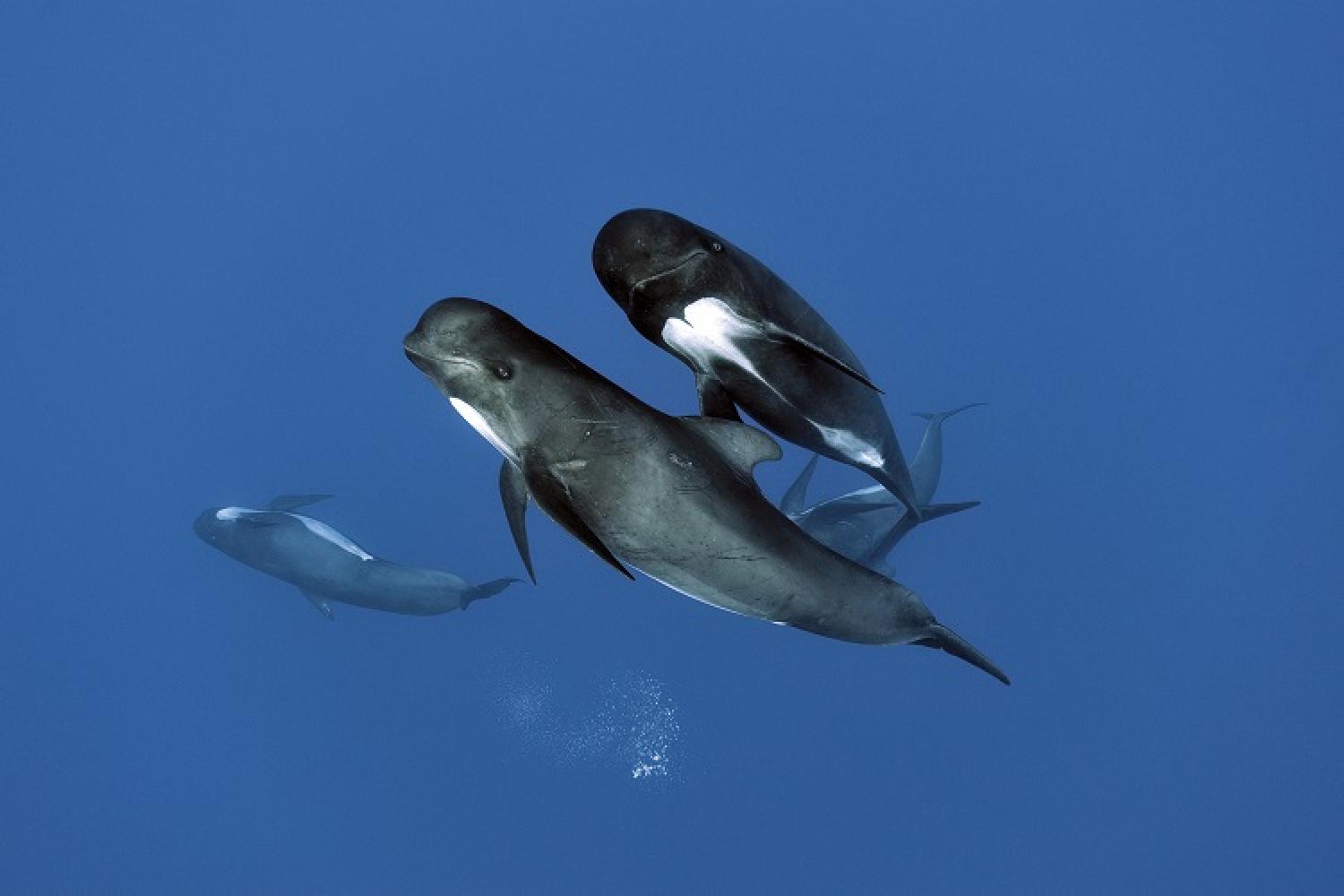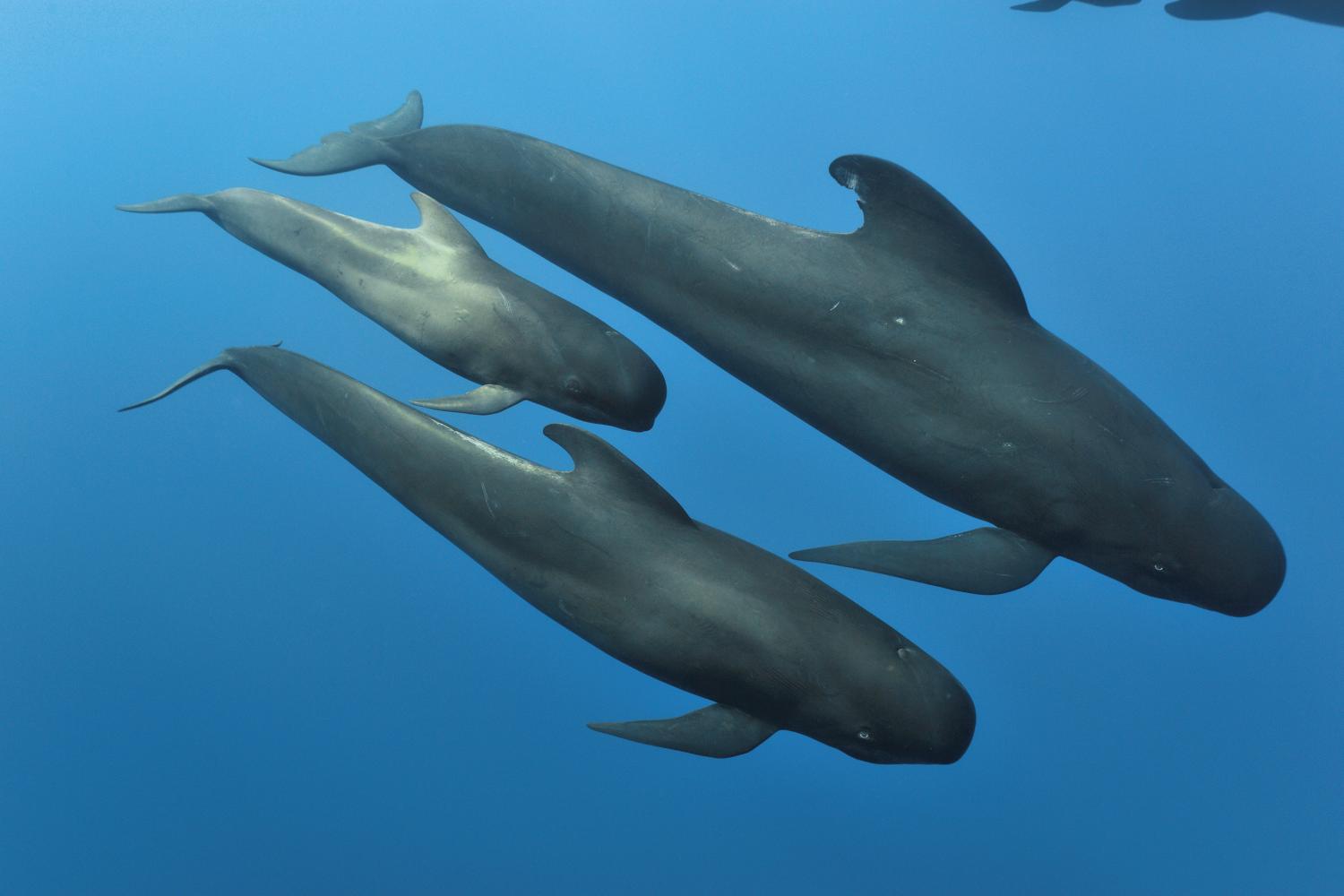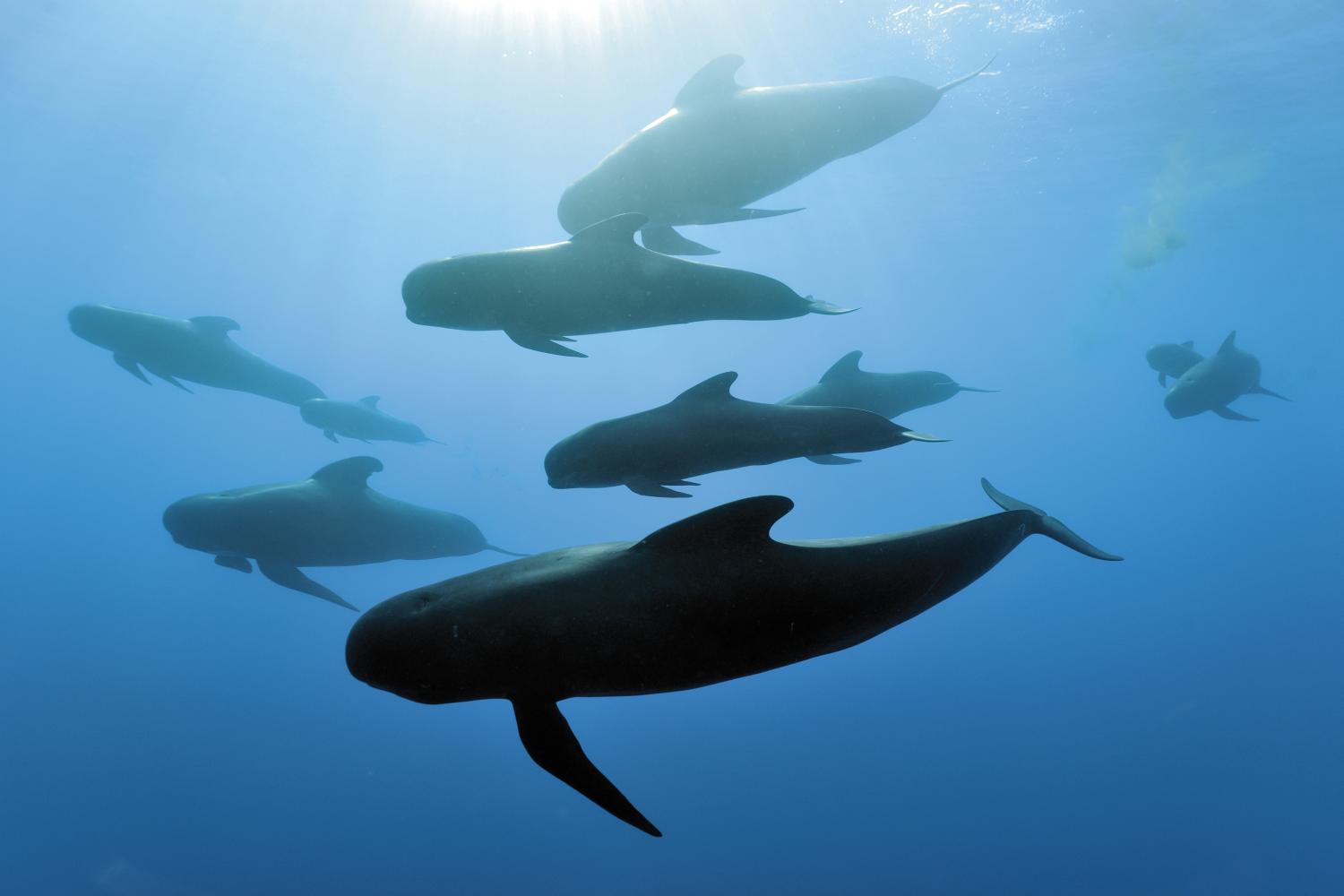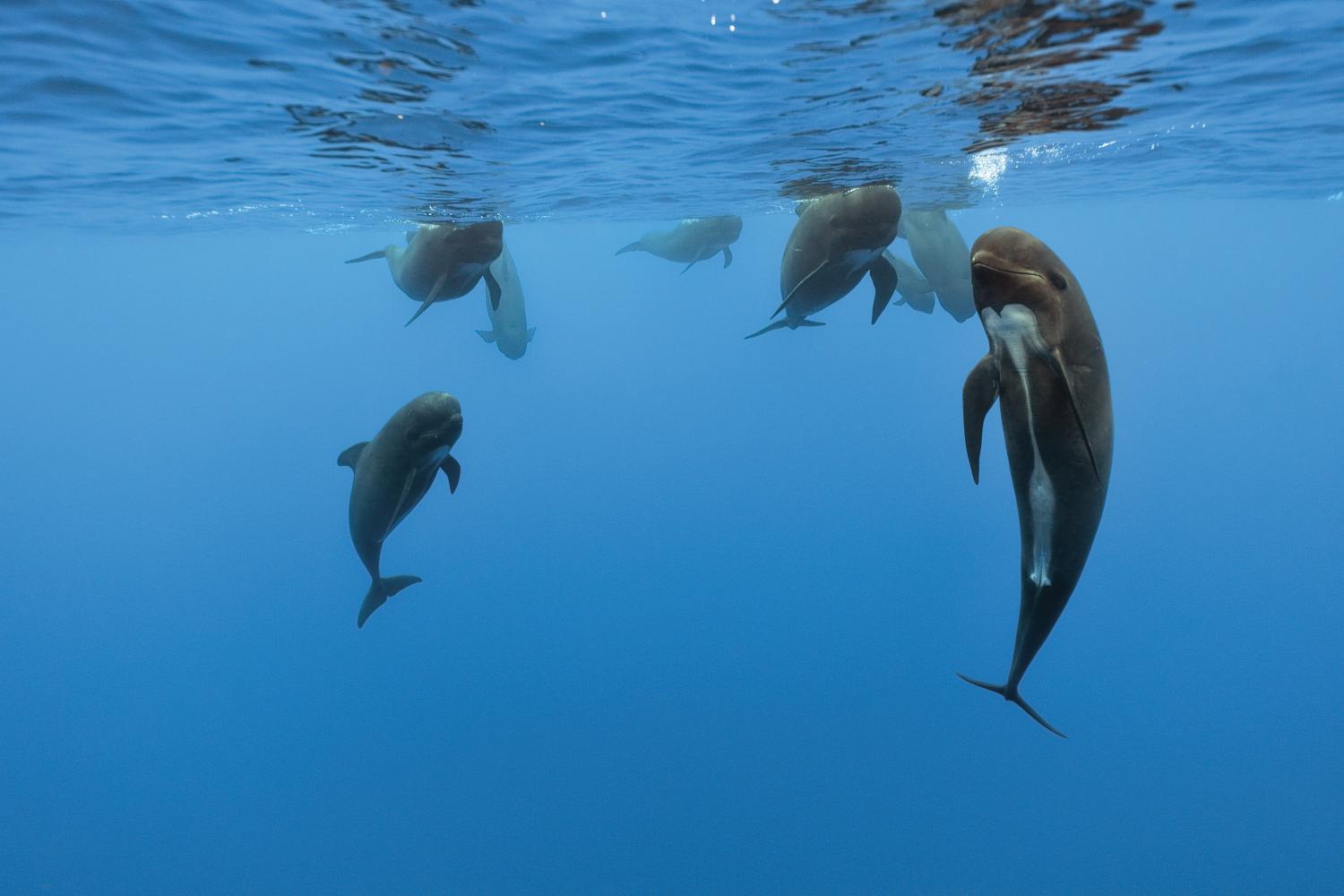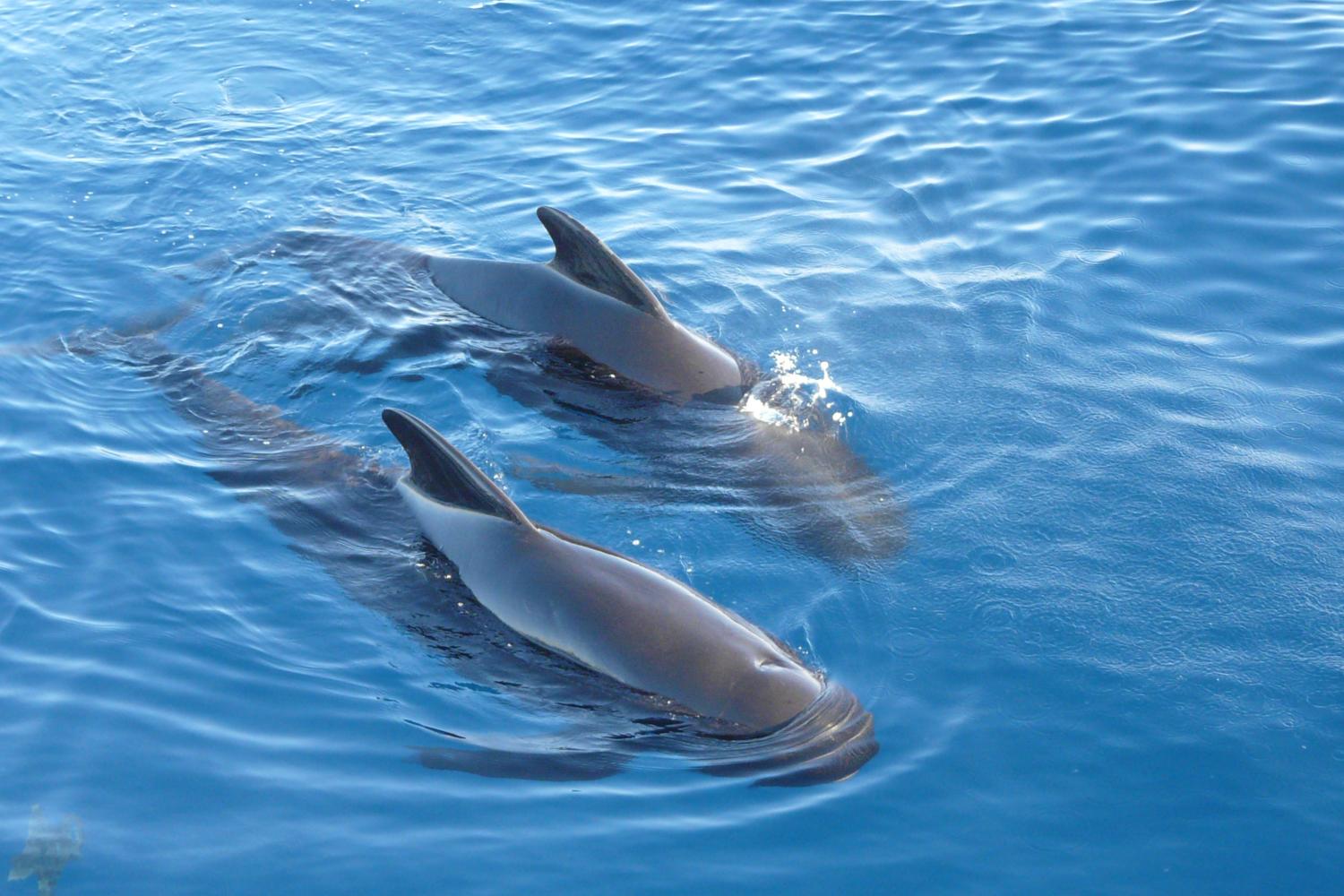Description
The long-finned pilot whale is a cetacean with teeth, that can measure up to 6 meters long and weigh up to three tonnes! It can be identified by its very prominent “melon” (bulbous forehead). It is an extremely sociable animal and lives in large groups of several tens of individuals. It mainly feeds on squid and fish.
Scientific name
Globicephala melas
Natural habitats
Pelagic zone
Did you know?
The long-finned pilot whale sometimes has strange position vis-a-vis to humans: when it is not swimming, it has it head out of the water and appears to be spying on us.
Conservation stake
Low
Threats
- Pollution and changes to its environment
- Noise disturbance from maritime traffic
- Collision with boats
- Accidental capture in fishing nets
- Ingestion of plastic waste that can kill it./li>
Conservation management initiatives
Monitoring with photo-identification of individuals and their distribution ranges
How can I help to protect it?
- I do not cut across swim routes of cetaceans
- I keep a distance of more than 100 meters from them
- I do not follow them. If cetaceans suddenly change their speed or direction this mean that they do not want to be followed
- I pick up, take back and sort waste
- I ensure that the use of plastic packaging is limited

